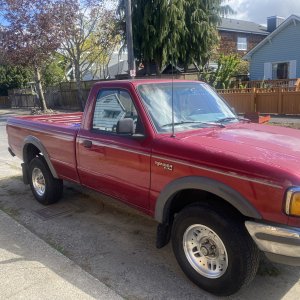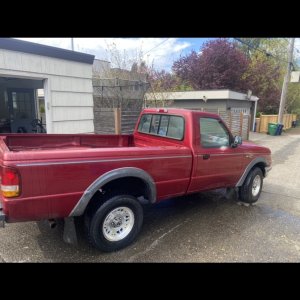- Joined
- May 15, 2020
- Messages
- 2,472
- Reaction score
- 4,054
- Points
- 113
- Age
- 69
- Location
- Atlanta
- Vehicle Year
- 1997 1987
- Make / Model
- Ranger XLT x2
- Engine Type
- 4.0 V6
- Engine Size
- 4.0 & 2.9
- Transmission
- Manual
- 2WD / 4WD
- 4WD
- Total Lift
- 97 stock, 3” on 87
- Total Drop
- N/A
- Tire Size
- 235/75-15
- My credo
- Never put off ‘til tomorrow what you can put off indefinitely
Yeah on the gages, boo on the engine rebuild…Never worked the hardware store, but have handled a lot of aircraft grade hardware in my line of work. Seen bunch of this kind of stuff over the years. One of the most annoying things I've encountered was an unthreaded nut. Grabbed the amount I needed off benchstock. The nuts screwed onto fasteners inside a blind hole. A few went on great, then I just couldn't get one started. Tried and tried, but it wouldn't start. I assumed I just wasn't getting it lined up right, not an uncommon problem when working in a spot like that. Turned out there were no threads. I started checking them after that.
Verdict on the gauges... Electric gauge is not inaccurate, it just doesn't register below 10 PSI and for some reason they mark that as 0 on the gauge. Installed the mechanical in parallel with it to day and let the truck idle up from cold to operating temp. From a cold start they matched almost perfectly the same tick for tick. Cold they both read about 44 psi, they dropped the same all the way down to 10 (or zero on electric) as it came up to operating temp. Plan is to put a thicker oil in and start building an engine. It was going to happen eventually anyway.
Question: if you add up all the gas back-and-forth to the parts store, the cost of all the gauges, and ten cents an hour for your time, could you just have bought an engine by now?
I’ve been down that road more times than I can’t remember……
EDIT: I don’t like the idea of any gage that reads “zero“ if it’s not really zero. I’m wondering if the intent of that is that below 10 psi the engine isn’t being lubed properly, so that’s the red flag. Is there some other kind of red light or warning for low pressure?














